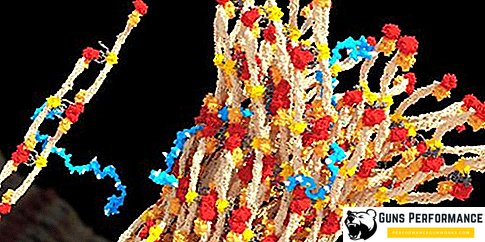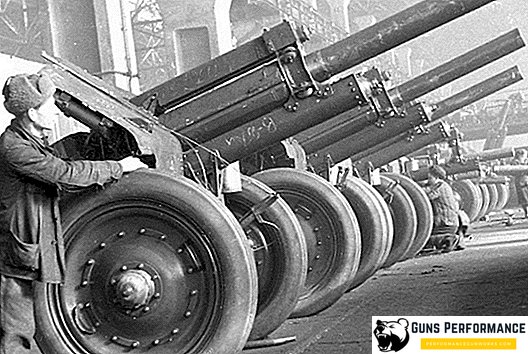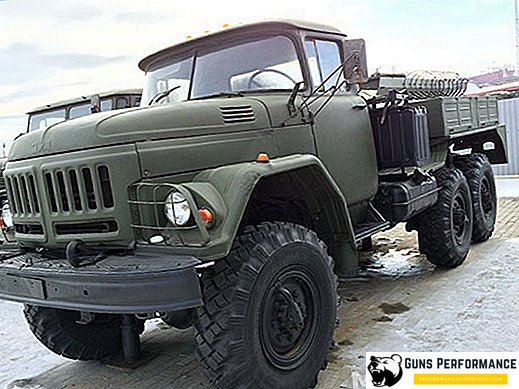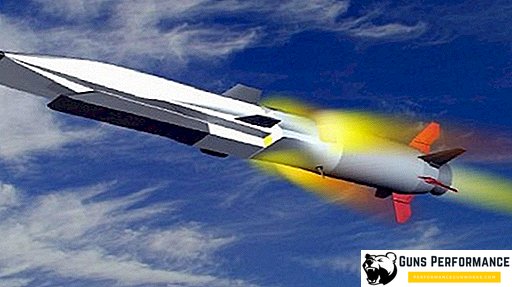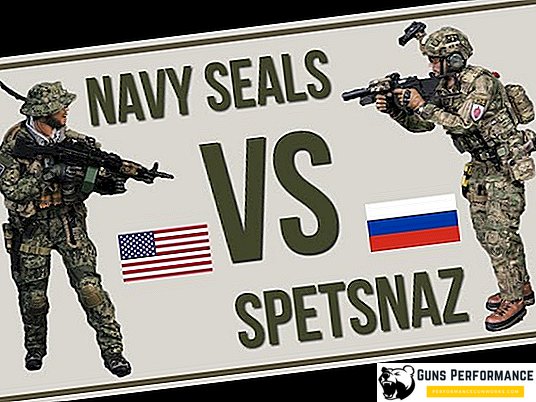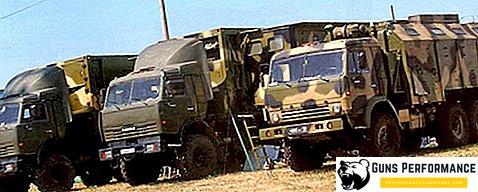After the battle of Stalingrad, which ended in disaster for Germany, the Wehrmacht attempted revenge in the next, 1943. This attempt went down in history as the Battle of Kursk and became the final turning point in the Great Patriotic and World War II.
Prehistory of the Battle of Kursk
During the counteroffensive from November 1942 to February 1943, the Red Army managed to defeat a large German grouping, encircle and force the 6th Wehrmacht army near Stalingrad to surrender, and also liberate vast territories. So, in January-February, the Soviet troops managed to seize Kursk and Kharkov and thereby cut through the German defenses. The gap reached approximately 200 kilometers in width and 100-150 in depth.
Realizing that the further Soviet offensive could lead to the collapse of the entire Eastern Front, the Hitlerite command in early March 1943 took a series of vigorous actions in the Kharkiv region. Very quickly, the shock group was created, which by March 15 again captured Kharkov and made an attempt to cut off the ledge in the Kursk area. However, here the German offensive was stopped.
As of April 1943, the line of the Soviet-German front was almost even throughout its length, and only in the Kursk area was bent, forming a large protrusion, which went into the German side. The configuration of the front made it clear where the main battles would take place in the 1943 summer campaign.
Plans and forces of the parties before the Battle of Kursk
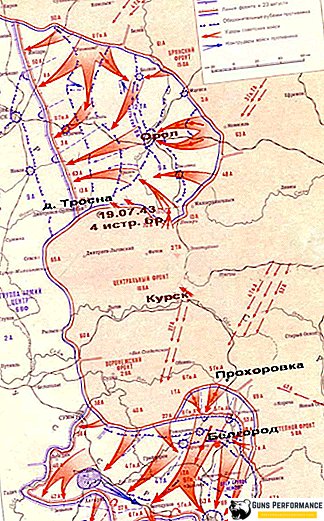
In the spring, heated debate among the German leadership flared up over the fate of the summer of 1943 campaign. Part of the German generals (for example, G. Guderian) in general offered to refrain from an offensive in order to accumulate forces on the large-scale offensive campaign of 1944. However, the majority of German military leaders were strongly for the offensive already in 1943. This offensive was supposed to be a kind of revenge for the humiliating defeat at Stalingrad, as well as the final turn of the war in favor of Germany and its allies.
Thus, in the summer of 1943, Hitler’s command again planned an offensive campaign. However, it is worth noting that from 1941 to 1943 the scale of these campaigns steadily decreased. So, if in 1941 the Wehrmacht launched an offensive on the entire front, in 1943 it was only a small sector of the Soviet-German front.
The meaning of the operation, called the "Citadel", was to attack the large Wehrmacht forces at the base of the Kursk Bulge and strike them in the general direction against Kursk. Soviet troops in the ledge, inevitably had to get into the environment and be destroyed. After that, it was planned to launch an offensive in the formation of a breach in the Soviet defense and reach Moscow from the southwest. This plan, if it were successfully implemented, would be a real catastrophe for the Red Army, because there was a very large number of troops in the Kursk salient.
The Soviet leadership learned important lessons from the spring of 1942 and 1943. So, by March 1943, the Red Army was thoroughly exhausted by offensive battles, which led to the defeat near Kharkov. After that, it was decided not to launch the summer campaign with an offensive, as it was obvious that the Germans were also planning to attack. Also, the Soviet leadership had no doubt that the Wehrmacht would attack precisely on the Kursk Bulge, where the configuration of the front line contributed as much as possible to this.
That is why, after weighing all the circumstances, the Soviet command decided to wear out the German troops, inflict serious losses on them and then go on the offensive, finally fixing the turning point in the war in favor of the countries of the anti-Hitler coalition.
For the attack on Kursk, the German leadership concentrated a very large group of 50 divisions. Of these 50 divisions, 18 were tank and motorized. From the sky, the German group was covered by aviation of the 4th and 6th Luftwaffe air fleets. Thus, the total number of German troops to the beginning of the battle of Kursk was about 900 thousand people, about 2,700 tanks and 2,000 aircraft. Due to the fact that the northern and southern groups of the Wehrmacht on the Kursk Bulge were part of different army groups ("Center" and "South"), the command was exercised by the commanders of these army groups - field marshal Kluge and Manstein.
The Soviet grouping on the Kursk Bulge was represented by three fronts. The north face of the ledge was defended by the troops of the Central Front commanded by Army General Rokossovsky, the south by the troops of the Voronezh Front commanded by Army General Vatutin. Also in the Kursk salient were the troops of the Steppe Front, commanded by Colonel-General Konev. The general command of the troops in the Kursk salient was provided by marshals Vasilevsky and Zhukov. The number of Soviet troops was approximately 1 million 350 thousand people, 5000 tanks and about 2,900 aircraft.
Beginning of the Battle of Kursk (July 5 - 12, 1943)

On the morning of July 5, 1943, German troops launched an offensive on Kursk. However, the Soviet leadership knew about the exact time of the beginning of this offensive, thanks to which it was able to take a number of countermeasures. One of the most significant measures was the organization of artillery counterpreparation, which allowed in the first minutes and hours of the battle to cause serious losses and significantly reduce the offensive capabilities of the German troops.
However, the German offensive began, and in the early days he managed to achieve some success. The first line of the Soviet defense was broken, but the Germans did not succeed in achieving any serious successes. On the northern face of the Kursk Bulge, the Wehrmacht struck in the direction of Olkhovatka, but, failing to break through the Soviet defenses, turned toward the town of Ponyri. However, here the Soviet defense was able to withstand the onslaught of the German troops. As a result of the battles on July 5-10, 1943, the 9th German army suffered terrible losses in tanks: about two-thirds of the vehicles were out of action. July 10, the army moved to the defense.
More dramatically, the situation was unfolding in the south. Here the German army in the early days managed to penetrate the Soviet defense, but did not break it. The offensive was conducted in the direction of the settlement of Oboyan, which was retained by Soviet troops, which also caused significant damage to the Wehrmacht.
After several days of fighting, the German leadership decided to shift the direction of the main strike to Prokhorovka. The implementation of this decision in life would cover a larger area than planned. However, units of the Soviet 5th Guards Tank Army stood in the way of the German tank wedges.
On July 12, one of the largest tank battles in history broke out in the Prokhorovka area. About 700 tanks participated in it from the German side, while about 800 from the Soviet side. The Soviet troops launched a counterattack by parts of the Wehrmacht in order to eliminate the enemy's penetration into the Soviet defense. However, this counter attack did not achieve significant results. The Red Army was only able to stop the advance of the Wehrmacht in the south of the Kursk Bulge, but it was possible to restore the position to the beginning of the German offensive only two weeks later.
By July 15, having suffered huge losses as a result of continuous fierce attacks, the Wehrmacht almost exhausted its offensive capabilities and was forced to go on the defensive throughout the front. By July 17, the withdrawal of German troops to the starting lines began. Given the evolving situation, and also pursuing the goal of causing a serious defeat to the enemy, the Supreme Command Headquarters, on July 18, 1943, sanctioned the transfer of the Soviet troops on the Kursk Bulge to the counteroffensive.

Now the German troops were forced to defend themselves in order to avoid a military catastrophe. However, units of the Wehrmacht, seriously exhausted in offensive battles, could not provide serious resistance. The Soviet troops, reinforced by reserves, were full of power and readiness to crush the enemy.
For the defeat of the German troops covering the Kursk Bulge, two operations were developed and carried out: "Kutuzov" (to defeat the Oryol group of the Wehrmacht) and "Rumyantsev" (to defeat the Belgorod-Kharkov group).

As a result of the Soviet offensive, the Oryol and Belgorod groups of German troops were defeated. On August 5, 1943, Oryol and Belgorod were liberated by Soviet troops, and the Kursk Bulge practically ceased to exist. On the same day, Moscow for the first time saluted the Soviet troops, who liberated cities from the enemy.

The final battle of the Battle of Kursk was the liberation of Kharkov by the Soviet troops. The fighting for this city took on a very fierce character, however, thanks to the resolute onslaught of the Red Army, the city was liberated by the end of August 23. It is the capture of Kharkov and is considered the logical conclusion of the Kursk battle.

Loss sides
Estimates of the losses of the Red Army, as well as of the Wehrmacht troops, have various estimates. Even more ambiguity is caused by large differences between the estimates of the parties' losses in different sources.
Thus, Soviet sources indicate that during the Battle of Kursk the Red Army lost about 250 thousand people killed and about 600 thousand wounded. However, some Wehrmacht data indicate 300 thousand killed and 700 thousand wounded. The losses of armored vehicles range from 1,000 to 6,000 tanks and self-propelled guns. Soviet aviation losses are estimated at 1600 cars.
However, regarding the assessment of the losses of the Wehrmacht data vary even more. According to German data, the loss of German troops ranged from 83 to 135 thousand people killed. But at the same time, Soviet data indicate the number of dead Wehrmacht soldiers at about 420 thousand. The losses of German armored vehicles range from 1,000 tanks (according to German data) to 3,000. Losses of aviation amount to approximately 1,700 aircraft.
Results and value of the Battle of Kursk
Immediately after the Battle of Kursk and directly during it, the Red Army began a series of large-scale operations to liberate Soviet lands from the German occupation. Among these operations: "Suvorov" (operation to liberate Smolensk, Donbass and Chernigov-Poltava.
Thus, the victory at Kursk opened for the Soviet troops a vast operational scope for action. German troops, drained of blood and defeated as a result of the summer battles, ceased to be a serious threat until December 1943. However, this absolutely does not mean that the Wehrmacht at that time was not strong. On the contrary, fiercely snarling, the German troops sought to keep at least the line of the Dnieper.
For the command of the allies, in July 1943, a landing party on the island of Sicily, the Battle of Kursk became a kind of "help", since the Wehrmacht could not now transfer reserves to the island - the Eastern Front was more prioritized. Even after the defeat at Kursk, the command of the Wehrmacht was forced to transfer fresh forces from Italy to the east, and in their place send units, battered in battles with the Red Army.
For the German command, the Battle of Kursk became the moment when the plans to defeat the Red Army and the victories over the USSR finally became an illusion. It became clear that for quite a long time the Wehrmacht would have to refrain from conducting active actions.
The battle of Kursk was the completion of a radical change in the Great Patriotic and World War II. After this battle, the strategic initiative finally passed into the hands of the Red Army, thanks to which by the end of 1943 vast territories of the Soviet Union were liberated, including such large cities as Kiev and Smolensk.
In the international sense, the victory in the Battle of Kursk was the moment when the peoples of Europe, enslaved by the Nazis, took heart. The liberation movement in Europe began to grow even faster. It culminated in 1944, when the decline of the Third Reich was very obvious.




